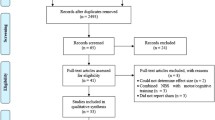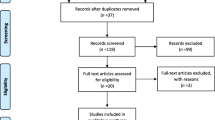Abstract
Early-onset Parkinson’s Disease (EOPD) demands tailored treatments. The younger age of patients might account for a higher sensitivity to transcranial direct current stimulation (tDCS) based non-invasive neuromodulation, which may raise as an integrative therapy in the field. Accordingly, here we assessed the safety and efficacy of the primary left motor cortex (M1) anodal tDCS in EOPD. Ten idiopathic EOPD patients received tDCS at 2.0 mA per 20 min for 10 days within a crossover, double-blind, sham-controlled pilot study. The outcome was evaluated by measuring changes in MDS-UPDRS part III, Non-Motor Symptoms Scale (NMSS), PD-cognitive rating scale, and PD Quality of Life Questionnaire-39 scores. We showed that anodal but not sham tDCS significantly reduced the NMSS total and “item 2” (sleep/fatigue) scores. Other parameters were not modified. No adverse events occurred. M1 anodal tDCS might thus evoke plasticity changes in cortical-subcortical circuits involved in non-motor functions, supporting the value as a therapeutic option in EOPD.
Similar content being viewed by others
Data availability
Data are available from the authors upon reasonable request.
References
Antal A et al (2017) Low intensity transcranial electric stimulation: safety, ethical, legal regulatory and application guidelines. Clin Neurophysiol. https://doi.org/10.1016/j.clinph.2017.06.001
Berganzo K et al (2016) Motor and non-motor symptoms of Parkinson’s disease and their impact on quality of life and on different clinical subgroups. http://www.elsevier.es/neurologia
Bovenzi R et al (2023) Shaping the course of early-onset Parkinson’s disease: insights from a longitudinal cohort. Neurol Sci. https://doi.org/10.1007/s10072-023-06826-5
Camerucci E et al (2021) Early-onset parkinsonism and early-onset Parkinson’s disease: a population-based study (2010–2015). J Parkinson’s Dis. https://doi.org/10.3233/JPD-202464
Chan MMY, Yau SSY, Han YMY (2021) The neurobiology of prefrontal transcranial direct current stimulation (tDCS) in promoting brain plasticity: a systematic review and meta-analyses of human and rodent studies. Neurosci Biobehav Rev. https://doi.org/10.1016/j.neubiorev.2021.02.035
Chen R et al (2022) Clinical neurophysiology of Parkinson’s disease and parkinsonism. Clin Neurophysiol Pract. https://doi.org/10.1016/j.cnp.2022.06.002
Christopher L et al (2014) Uncovering the role of the insula in non-motor symptoms of Parkinson’s disease. Brain. https://doi.org/10.1093/brain/awu084
Cilia R et al (2023) Levodopa equivalent dose of safinamide: a multicenter, longitudinal, case–control study. Mov Disord Clin Pract. https://doi.org/10.1002/mdc3.13681
de Oliveira PCA et al (2022) Transcranial direct current stimulation on Parkinson’s disease: systematic review and meta-analysis. Front Neurol. https://doi.org/10.3389/fneur.2021.794784
Domingos J et al (2023) People with early onset Parkinson’s disease: empowered to improve care. J Parkinson’s Dis 13(4):633–636. https://doi.org/10.3233/jpd-230039
Grillo P et al (2022) Constipation distinguishes different clinical-biochemical patterns in de novo Parkinson’s disease. Parkinson Relat Disord. https://doi.org/10.1016/j.parkreldis.2022.08.001
Habich A et al (2020) Stimulating aged brains with transcranial direct current stimulation: opportunities and challenges. Psychiatry Res Neuroimaging. https://doi.org/10.1016/j.pscychresns.2020.111179
Halliday GM et al (2014) The neurobiological basis of cognitive impairment in Parkinson’s disease. Mov Disord. https://doi.org/10.1002/mds.25857
Kostić VS, Tomić A, Ječmenica-Lukić M (2016) The pathophysiology of fatigue in Parkinson’s disease and its pragmatic management. Mov Disord Clin Pract. https://doi.org/10.1002/mdc3.12343
Lefaucheur JP et al (2017) Evidence-based guidelines on the therapeutic use of transcranial direct current stimulation (tDCS). Clin Neurophysiol. https://doi.org/10.1016/j.clinph.2016.10.087
Liu X et al (2021) Transcranial direct current stimulation for Parkinson’s disease: a systematic review and meta-analysis. Front Aging Neurosci. https://doi.org/10.3389/fnagi.2021.746797
McDaniels B et al (2023) Early-onset Parkinson’s disease: an assessment of unmet psychosocial needs. Parkinson Relat Disord. https://doi.org/10.1016/j.parkreldis.2023.105395
Mehanna R (2022) Age cutoff for early-onset Parkinson’s disease: recommendations from the international Parkinson and movement disorder society task force on early onset Parkinson’s disease. Mov Disord Clin Pract. https://doi.org/10.1002/mdc3.13523
Mehanna R, Jankovic J (2019) Young-onset Parkinson’s disease: its unique features and their impact on quality of life. Parkinson Relat Disord. https://doi.org/10.1016/j.parkreldis.2019.06.001
Nitsche MA, Paulus W (2000) Excitability changes induced in the human motor cortex by weak transcranial direct current stimulation. J Physiol. https://doi.org/10.1111/j.1469-7793.2000.t01-1-00633.x
Postuma RB et al (2015) MDS clinical diagnostic criteria for Parkinson’s disease. Mov Disord. https://doi.org/10.1002/mds.26424
Santana K et al (2023) Non-invasive brain stimulation for fatigue in post-acute sequelae of SARS-CoV-2 (PASC). Brain Stimul. https://doi.org/10.1016/j.brs.2023.01.1672
Schade S, Mollenhauer B, Trenkwalder C (2020) Levodopa equivalent dose conversion factors: an updated proposal including opicapone and safinamide. Mov Disord Clin Pract. https://doi.org/10.1002/mdc3.12921
Schirinzi T et al (2019) CSF α-synuclein inversely correlates with non-motor symptoms in a cohort of PD patients. Parkinson Relat Disord. https://doi.org/10.1016/j.parkreldis.2018.10.018
Tran TN et al (2021) The effect of non-motor symptoms on health-related quality of life in patients with young onset Parkinson’s disease: a single center Vietnamese cross-sectional study. Clin Parkinson Relat Disord. https://doi.org/10.1016/j.prdoa.2021.100118
Underwood CF, Parr-Brownlie LC (2021) Primary motor cortex in Parkinson’s disease: functional changes and opportunities for neurostimulation. Neurobiol Dis. https://doi.org/10.1016/j.nbd.2020.105159
Woods AJ et al (2016) A technical guide to tDCS, and related non-invasive brain stimulation tools. Clin Neurophysiol. https://doi.org/10.1016/j.clinph.2015.11.012
Zenuni H et al (2023) Clinical and neurochemical correlates of APOE genotype in early-stage Parkinson’s disease. Neurobiol Aging. https://doi.org/10.1016/j.neurobiolaging.2023.07.011
Zhou F et al (2023) Abnormal intra- and inter-network functional connectivity of brain networks in early-onset Parkinson’s disease and late-onset Parkinson’s disease. Front Aging Neurosci. https://doi.org/10.3389/fnagi.2023.113272
Acknowledgements
We thank “Fondazione G.B. Baroni” and “Banca d’Italia” for their support to this study (grants to T.S.).
Funding
This study has been supported by grants from “Fondazione G. B. Baroni” (Bandi ricerca 2021) and “Banca d’Italia” to TS. The authors declare no conflict of interest. AS and NBM received grants from the Italian Ministry of University and Research and the Italian Ministry of Health.
Author information
Authors and Affiliations
Contributions
All authors contributed to the study conception and design. Material preparation, data collection and analysis were performed by CS, JB, MC, RB, CS, TS. The first draft of the manuscript was written by CS and all authors commented on previous versions of the manuscript. All authors read and approved the final manuscript.
Corresponding author
Ethics declarations
Ethics approval
The study was conducted in agreement with the principles of the Helsinki Declarations and was approved by the local ethics committee (protocol no. 190/18).
Consent to participate
Written informed consent was acquired from each participant.
Additional information
Publisher's Note
Springer Nature remains neutral with regard to jurisdictional claims in published maps and institutional affiliations.
Rights and permissions
Springer Nature or its licensor (e.g. a society or other partner) holds exclusive rights to this article under a publishing agreement with the author(s) or other rightsholder(s); author self-archiving of the accepted manuscript version of this article is solely governed by the terms of such publishing agreement and applicable law.
About this article
Cite this article
Simonetta, C., Bissacco, J., Conti, M. et al. Motor cortex transcranial direct current stimulation improves non-motor symptoms in early-onset Parkinson’s disease: a pilot study. J Neural Transm 131, 189–193 (2024). https://doi.org/10.1007/s00702-023-02726-2
Received:
Accepted:
Published:
Issue Date:
DOI: https://doi.org/10.1007/s00702-023-02726-2




